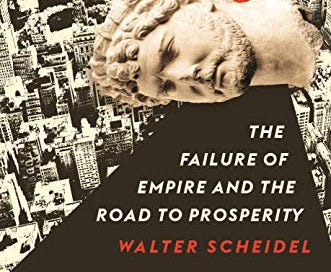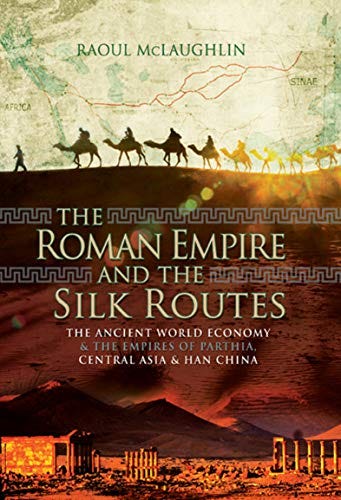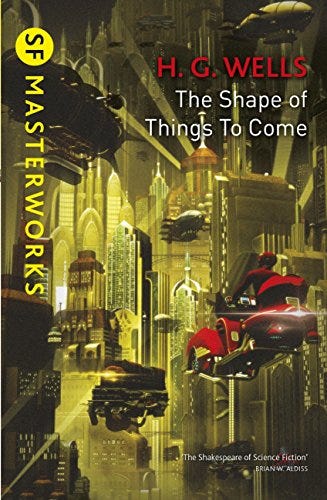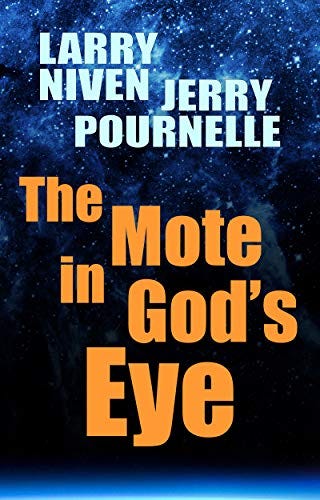Across the last 11,700 years there have been a number of civilizational collapses. In them, both socioeconomic complexity and human population decline dramatically. The earlier civilizational collapses are inferred from archaeology and palynology. While a collapse around 2200 BC may possibly be referenced in the Bible, the last two collapses are certainly known historically - the Bronze Age Collapse of the 12th century BC and the Fall of Rome in the 5th century AD.
In those two known cases, the scale of the collapse was considerably vaster than historical records suggest. At least the Celts, Germans, Iranians, Semites, and Finno-Ugrians launched series of wars that ended with substantial population replacement during the Bronze Age Collapse. Places such as the Don River Basin in what is now southern Russia and Eastern Ukraine lost access to metal, and reverted to working with stone and bone. The Fall of Rome saw the die offs of civilized urban populations as well as the rise of the Germans, the Slavs, the Berbers, and the Arabs. Even places as far from Rome as the Congo were deeply affected by the collapse.
Did those collapses delay human progress? Or were they necessary to allow the development of new and more progressive socioeconomic systems? Walter Scheidel’s Escape from Rome suggests the latter.
The latter part of the Bronze Age (roughly 1800-1200 BC) involved, as can be expected from the name, armies armed and armored with bronze. Bronze is made from copper (of which there are many easily accessible deposits) and tin (a metal with only a limited number of sources). While iron ores are far more accessible than tin, the temperatures required to make iron were higher than what was attainable in most areas in the Bronze Age. Bronze, with its considerably lower (by about 600 C) melting point, could be forged into useful tools by many of the peoples of Eurasia in the Bronze Age, while iron could not.
The result was that weaponry in the Bronze Age was more expensive than it became later, and warfare was more of an elite affair. Chariot riders and chosen warriors dominated the battlefields of the time. It was an age of kings and priests. They needed to win the loyalty of their elite warriors, not the masses of the people. Thus the ideologies that allowed for the state to mobilize the masses for war or infrastructure to the degree of later ages never developed. The pyramids and the megaliths stood out in the sky as lone peaks of developments rather than parts of entire mountain ranges erected in the course of civilizational progress. The “hydraulic despotisms” had yet to form - irrigation and water storage was organized from the bottom up rather than top down. Instead, the ideologies glorified tiny numbers of elite warriors - like the men of the Iliad or King David’s thirty-seven mighty warriors.
The spread of iron metallurgy from the south Caucasus in the early 1st millennium BC ushered in the Iron (or Classical) Age. With the ability to turn plentiful iron ores into weapons and armor, equipping armies became considerably cheaper than it had been in the Bronze Age. Societies that could mobilize large numbers of men and equip them with iron survived and conquered, those which could not died. That process involved a great deal of social, economic, and political evolution.
One path of evolution was that of the polis - the Greek city-state. People had their identity and citizenship tied to a specific city, which in turn represented their interests. That city could join a league of other cities, contributing its wealth and men to a common defense. If it tired of the burdens of membership in that league, or found its unifying ideology repugnant, then it could leave and join another league - often starting a war in the process.
Another path of evolution was empire - such as Persia under the Achaemenids. An emperor or king of kings would demand tribute, obeisance, and men from his subjects. In return, they would receive his protection, aid in domestic struggles, economic integration, and broad domestic autonomy. There was no pretension of cooperative governance, although the subjects - who had states of their own, sometimes with considerable resources - could lobby the court, ally with other claimants to the throne, or revolt.
There were also the slave-oligarchies such as those of Sicily and Carthage. Huge numbers of battle captives or enslaved locals would be forced to labor in agriculture and industry to provide for an urban oligarchy which hired armies of foreign mercenaries to fight its wars. Such societies were capable of tremendous mobilization of labor and men, but were vulnerable to shocks dislocating the entire social structure.
Most famously, there were alliance networks such as that which grew around the Roman Republic in Italy. While citizenship was based around a specific urban community like a Greek polis, the structure of the alliances built around those communities differed from that of the Greek leagues. Rather than a central city collecting taxes from other league members, taxes were instead left with the allies, who largely administered their own internal affairs. Instead, it was soldiers who were demanded of the allies. Thus the development of the class of oligarchs whose wealth caused political polarization as well as extreme class resentments was slowed.
Shared military burdens and war comradeship bound the Roman Republic and its allies together. As they expanded beyond Italy, they came into violent contact with the Celtics, Greeks, and Carthaginians. The Roman mode of mass mobilization of both its core and its allies enabled it to triumph over its enemies, who due to their socioeconomic and political structures could not mobilize as many iron-equipped men. The cores of the rivals of Rome such as the city of Carthage were capable of mobilizing tremendous resources; but the peripheries of the empires, kingdoms, city-states, and slaver oligarchies could not mobilize at Roman levels. A slave, a league associate, and an imperial subject were both less willing and less able to fight for their ruler than an ally of Rome.
The system of mass mobilization of the core was associated with ideological innovations in Rome. Powerful figures competed with each other to win the support of the Roman people - in particular the people who would serve them as fighting men. That contrasted to other systems at the time, where differing political structures drove elites to collaborate with each other rather than seeking popular support. For instance, Cyrus the Younger raised a heavily non-Persian army from Ionia and Anatolia when he rose against his brother Artaxerxes II in 401 BC - not the Persian heartland. Ties to the satraps and non-Persians of the west counted for more of his strength than his ties to his own countrymen - and indeed he promised the Greeks who marched for him great influence were he to triumph.
While the mass mobilization of Roman society for war faded in the 1st century BC and after, its legacy remained in lower state capacity. Bordered by only one major power after the formation of the Empire, pressures for internal reforms to drive state capacity - military or economic - faltered. While the provinces were more integrated into the imperial power structure than the allies had been under the republic, provincial elites retained a considerably higher amount of resources and autonomy than their counterparts in Han dynasty China. As a result, Roman state revenues were around half of those of Han China - a considerably more developed bureaucratic state.
Large scale slavery also served to undermine the long-term development of the Roman Empire. Powerful landholders settled huge tracts of Italy with disloyal slaves, pushing the old social basis of the republic - the yeoman farmers - into peonage, penury, or the growing urban proletariat. Similar to the American South in the antebellum period, investments into slaves rather than capital such as watermills provided short term financial gains while in the long run decreasing economic productivity. Slavery also weakened the class collaboration which had fueled so much of Rome’s early dynamism. While Augustus tried to restore Roman morals and the yeoman farmer social basis of Rome, the introduction of contraceptives in the 1st century BC following the annexation of what is now eastern Libya as well as widespread immigration to Italy appears to have led to the replacement of the Italian population outside of certain remote areas in the peninsula.
The formerly active and participatory political system was replaced with an ossified and increasingly personalized political structure. Intriguers rather than ideologues drove the course of the Empire - particularly after the Crisis of the Third Century. Bureaucratization never approached Chinese levels, and much of the Empire gradually began to devolve into feudalism or outright barbarism.
The decline of Rome offered an opportunity for parallel power structures. While Christianity began as one mystery cult of many, its ability to win truly devout converts as well as its relatively simplified conversion process gave it an advantage over the others. The appeal of faith and righteousness is never so strong as it is in an age of amoral strongmen. While Rome fell, the Christian Church endured and grew stronger. It was able to leverage the beliefs of the faithful into political and economic power, controlling a significant (up to a third in some parts of Europe) of European land in the first half of the second millennium AD.
The Catholic Church worked with the German and Slav warlords who had conquered Europe in the aftermath of the Fall of Rome. It was closely in touch with much of the population through its armies of priests, friars, and monks; thus sewing new social fabrics from the old threads of Roman civilizations and the teachings of Jesus. Those social fabrics in time wiped away the bloodiest ways of the barbarian warlords, and allowed for civilization to regrow.
Political stability as well as Europe’s enviable hydrology encouraged capital investment in water power, particularly after the start of the 11th century AD. While water power had been used extensively in the Roman Empire, the abolition of slavery in many parts of Europe in the Middle Ages as well as political fragmentation drove a capital rather than labor intensive path of economic development - a path which became self-reinforcing after 13th century innovations in mill technology and particularly after the Black Plague in the 14th century.
The increased wealth and development of Europe also paved an opening to religious reform. Impoverished and uneducated priests could create syncretisms with local superstitions or relic polytheistic beliefs, but not heresies which could threaten the Catholic Church. The increased wealth of European societies as well as the spread of education by contrast did allow for the creation of heresies. Relatively wealthy peasants could afford to travel across the continent to seek spiritual meaning, and return with new and offensive ideas. The brazen corruption of the Catholic Church as well as desires among the masses to listen to the Bible in the vernacular had long offered opportunities for heretics and reformers, but it was only after the Black Plague that Europe was developed enough for them to take root and spread. The Hussites and Lollards of the early 15th century were just harbingers of what was to come.
Pious nobles unhappy with the corruption of their religion were increasingly joined by nobles who saw political and economic opportunities in Church reform across the 15th and 16th centuries. The resultant Reformation saw Western Christendom divided on sectarian grounds, and started a process of technological development, economic growth, and social mobilization that continued deep into the 20th century. Sectarian polemicists, eager to win souls for what they saw as the True Faith, began creating ideologies that competed with each other to attract and mobilize the masses. They would be succeeded in time by nationalist and ideological thinkers who would invent new ideologies enabling or justifying even greater mobilization of state, economy, and population. The smaller Protestant states, needing resources to fight the larger Catholic states, seized the monasteries and took over Church functions. Sweden in particular became famous for the degree which it mobilized its economy and society for war.
States that failed to mobilize their resources and populations were devoured by those that did. Similarly, vicious interstate competition drove improvements in government administration. The number of European states fell from hundreds in the 15th century to seventeen in 1942. In that span there was a relentless improvement of state capacity. Areas were mapped and made legible to bureaucrats though collection of statistics. Quarantines were organized to protect the population from disease. The status of the nobility was codified and regularized, then later abolished. Censuses counted entire populations. Rome had been surpassed not just in technology, but in society and politics as well.
HG Wells saw the centuries-long process of political consolidation and growth of state capacity continuing deep into the 21st century. In his The Shape of Things to Come, both the multiparty democracies and single-party states fight each other to exhaustion in a drawn out Second World War which ends with the class of transportation administrators using their air power to conquer the world. The resultant state abolishes religion and spreads belief in science, then after a century of mass mobilization from the top-down finally gives way to a utopia.
Well’s near contemporary, Jack London, also saw political consolidation and growth of state capacity continuing into the 21st century, though with nightmarish results. In his The Iron Heel, capitalist oligarchies suck up gains in productivity driven by industrialization while also buying out small enterprises. That ends the social basis for republicanism and leaves the masses impoverished. It takes a socialist revolution to finally improve the conditions of the population.
The main exception to the process of vicious interstate competition driving an increase in state capacity in the Western world was America. Due to the large-scale die offs of Amerindians in the 16th and 17th centuries, American settlers never needed to develop strong state structures of mobilize resources on a large scale to secure land and resources. Even small religious sects and groups of fractitious exiles (such as my own Mennonite ancestors) were able to thrive in the lush but depopulated lands of America. Attempts at consolidating central authority backfired in the 1770s, resulting in the creation of a new, loosely bound federal state - the United States. Even after the growth of the power of the central government from the 1860s to the 1960s, there remained a remarkable amount of capacity for voluntarism and self-organization that was only finally strangled by civil rights law, income inequality, and mass immigration in the latter half of the 20th century. State capacity never rose to European levels.
The United States has a degree of urban disorder unusual by the standards of the First and arguably even Second Worlds. Many major USian cities contain substantial homeless populations numbering in the tens of thousands, and have an age-adjusted murder rate several times that of East Asian and European cities. Disrespect for both society and the law is widespread in those areas, and those conditions have become both normalized and moralized. USian political structures which developed out of the Civil Rights movement have proven incapable of addressing those problems, but have proven very capable of snuffing out criticism and indeed spreading those problems across its sphere of influence.
In addition to the problem of disorder, there is the “IQ Shredder” problem. Places such as San Francisco and Singapore attract the most intelligent people from around the world, concentrate them in very expensive areas, then cause their fertility to fall well below replacement. Since intelligence is heritable, this has been causing the genotypic potential for intelligence in affected populations to fall for an unknown amount of time.
Did the history of the United States destine it to have a lower state capacity? Is its lower state capacity a positive good as suggested by Republican thinkers, as it allows for the creative destruction of capitalism? Is it a historical aberration set in motion by the United States’ predecessor, America, in the 17th through early 19th centuries? Was it inevitable for state capacity to decline in conjunction with increased global political fragmentation? Could the triumph of the United States in the second half of the 20th century have delayed rather than accelerated human progress?
There have been a number of theories. Both Germany and Japan feared that their growing populations would come to starve in time. The breakdown of trade and rise of protectionism during and after the First World War led to serious internal issues in both countries. Increases in crop yields as well as natural declines of population growth rates due to the social effects of modernity elsewhere were not obvious in the early 20th century. Chemical fertilizers, high-yielding cultivars, and mechanized agriculture, while not unknown in the 1910s, only really became widespread around the world in the 1960s.
Those fears of starvation drove the extreme militarism that characterized both Japan and Germany in the 1930s and 1940s. The conquest of Ukraine and Manchuria would have guaranteed plentiful harvests for both nations whatever else may come. Had they been able to maintain their conquests in the 1940s, the large populations and territories of Germany and Japan would have enabled their high state capacity political model to emerge as serious competitors to the USian model in the second half of the 20th century. How that would have played out is unknown. Multiparty democracies are more robust than party-states, but at the same time are more limited in their ability to mobilize the population. In party-states, party cadres are important components of organizing society even at its lowest levels, thus enabling mobilization to a greater degree than what the coalitional-collaborative methods of mobilization in multiparty democracies are capable of.
In spite of improvements in crop yields in the post-war period, Malthusian concerns remained prominent into the 1970s, and the very real Malthusian pressures played a role in the disorder of the time. The post-war youth bulge in the West was accompanied by widespread unrest in the United States, France, and Germany. Crime exploded in the United States, but the death toll was relatively small compared to the bloodletting elsewhere. At a minimum, hundreds of thousands were killed in the fighting in Bangladesh in the early 1970s. Millions more died in southeast Asia, Ethiopia, Nigeria, and the Congo. Hundreds of thousands perished in each of the wars in the Sudan and Angola. While the Soviet Empire maintained order - however harsh - in northern Eurasia, China fell into two periods of internal bloodletting from 1958 to 1976.
The Malthusian concerns generated a number of proposed solutions, some quite cruel. Trotskyite thinker J. Posadas proposed that the Communist states of the world launch a nuclear first strike in order to end capitalism, leaving what remained of the world in the de facto hands of workers who could then usher in communism. Rightist thinker William Pierce proposed a vanguard party-state in the 1970s to mobilize the American population for warfare on national lines, with the resulting nuclear and post-nuclear warfare ushering in a new and more progressive society. Both Pierce and Posadas, in spite of their obvious differences, believed that a new civilizational collapse, while unpleasant, was a necessary step in human progress by forcing the development of new and superior societal models.
Thankfully, the success of the Green Revolution and world chemical industries obviated the need for such radical proposals. While population growth continued to outstrip agricultural growth in Africa; elsewhere improved yields, birth rate declines, and migration prevented catastrophe. Economic growth and technological progress ushered in an era of unprecedented prosperity rather than unprecedented bloodshed.
Apocalyptic fiction changed with the times too. Pournelle and Niven’s 1974 novel The Mote in God’s Eye is a enjoyable novel examining the long term effects of Malthusian processes after the advent of industrialization. The book describes an industrial alien society which had remained in its solar system for hundreds of thousands of years. During their innumerable civilizational cycles of rise and collapse, the aliens (moties) exhausted their system’s supply of fossil fuels and fissile materials. In response, they genetically engineered themselves to castes of extreme specialization and intelligence as well as lethal infertility, thus ensuring both the inevitable rise of a new civilization as well as its dooming from overpopulation.
Soylent Green, Logan’s Run, and Stand on Zanzibar were also popular works of fiction in the late 1960s and 1970s that addressed the Malthusian fears of the time.
By the 1980s, the successes of the Green Revolution and renewed economic growth cut fears such Malthusian fears - although Peak Oil theory became prominent in the Fallout series of videogames as well as among heterodox economic thinkers in the 2000s during the rise in oil prices following the USian invasion of Iraq in 2003. It was instead the idea of continued economic growth damaging the ecological basis of civilization that became popular instead. Fears about deforestation, the ozone layer, and global warming were popularized in works such as Ferngully, The Day After Tomorrow, and Captain Planet. Jared Diamond’s 2005 nonfiction book Collapse is perhaps the best summary of that view. Generally, ecological disaster fiction is meant to warn and diagnose rather than predict, with the functioning of societies after ecological collapse underexplored.
In the near future I expect two dominant strains of post-apocalyptic thought. The first is a pessimistic view of the advances in artificial intelligence - the Skynet problem. The idea is that a superhuman artificial intelligence will see humans as either antagonistic or unnecessary and fight to dispose of our species. The second view, and more relevant I suspect, is the bioerror problem. Bioengineering technology is very diffuse and increasingly cheap, so the ability of our species to tinker with the stuff of life is rapidly improving. While it offers many wonders, it seems quite likely that it will spawn inadvertent horrors as well. Indeed, if the lab leak theory of COVID19 origins is true, then it already has.
How will bioengineering affect the future? If bioerror pandemics become a common occurrence, state models allowing for a greater degree of state control over population movements will likely become more common. Liberal theories of individual autonomy will decline in popularity, and indeed perhaps have already given the vaccine mandates in a number of countries. There is a possibility that liberal individualism and multiparty democracy were aberrations that emerged from an unusually healthy era of public sanitation and effective medicine. Autocracy’s real roots, rather than political pathology, may be in the need to organize quarantines for public health. Were some bioerror plague to fell modern civilization and usher in a renewed era of fragmentation, public health officials may be the new ruling class.
Curious as to your thoughts. Feel free to comment below.









Not sure that "multiparty democracies are more robust than party-states," but at the same time I like how you add the caveat that they are "more limited in their ability to mobilize the population." Every time we remember 1939-45 as a great triumph of democracy, we should remember that it would have never been possible without the most authoritarian state ever devised, the Soviet Union, and without the UK relying on its hopelessly extractive empire.
It's interesting to see the term 'USian' stand in contrast to the term,'American.' I wonder if you mean the cleavage point was the Civil War or some other event. Some people talk about the 1913 establishment of central banking, a theory I have trouble understanding.